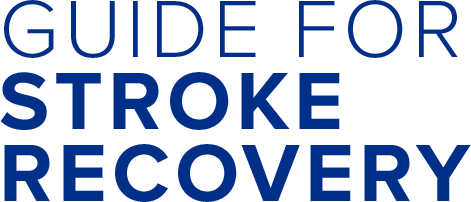After a stroke, it is helpful to spend time thinking about what is most important to you, and how to reduce the chances of having another stroke.
This section can help you:
- Consider your risk factors. These are the things that put you at risk of another stroke.
- Learn what lifestyle changes could benefit your health and help to prevent another stroke.
- Decide what changes you wish to focus on.
When you feel ready for making some changes, don’t take on too many at once. Trying to make 1 or 2 small improvements at a time will be easier to manage and will more likely lead to success.
Your health care providers will continue to work with you on your risk factors and your outlook about making changes for better health. You may want to share your worksheet with them. They can help you get support for the areas where you feel most motivated for change.
When speaking with your health care team, share any concerns you have about the changes you wish to make. They can help you find ways to make simple changes that can be easy to adopt. Over time you will see the progress you are making.
How to use the Self-Reflection Worksheet
1. Read about the risk factors in the Good Health section.
2. For each risk factor, answer these 3 questions. Choose the number on the scale that best represents how you feel. Enter the numbers in the columns of your worksheet found here.

Review your answers. To decide which areas you would like to focus on, consider:
- What areas would benefit most from improvement?
- What are you most motivated to do?
- What actions are you most confident that you can do?
Setting Goals
Setting goals is an important part of your recovery after stroke.
This can help you to regain control over your health and well-being.
How to set goals:
- Pick a goal that is important for you, so that you want to reach it.
- Think of each step needed to reach the goal.
- Decide when you will achieve the goal.
- Write this down!
- Review your progress often and adjust your goal if you need to.
Your goals will change over time. As you get better, you can adjust goals and set new ones.
You can download and print a goal worksheet to make it easier to set your goals.
You are more likely to be successful if you aim for something important to you and plan for how to achieve your goal.
Here is an example of a goal:
Goal
I will walk my grandchildren to school on their first day of class on September 4th
How will I reach this goal?
- I will do my home exercises 3 times a week.
- I will walk for 5 minutes around the block, 3 times a week.
- Each week I will increase my walking time until I can walk for 30 minutes without stopping.
- I will walk to the school and back (30 minutes) with my husband 2 times a week.
- In the last 2 weeks before school starts I will walk there by myself.
- I will make arrangements with my daughter to take my grandchildren to school on their first day.
